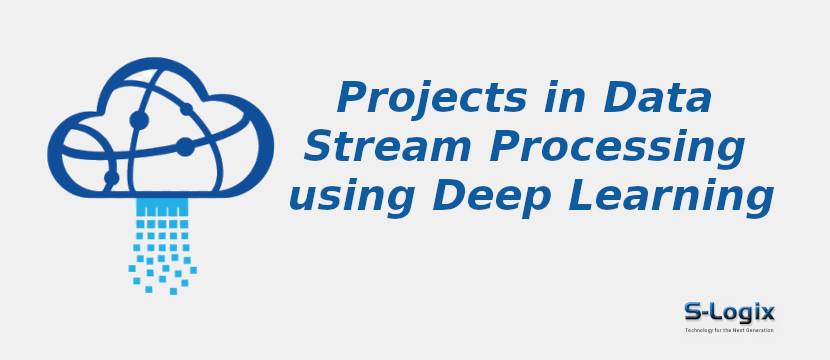Project Background:
Data stream processing using deep learning involves addressing the increasing volume and velocity of real-time data generated across various domains. With traditional data processing methods struggling to keep up, deep learning techniques have emerged as a promising solution to extract meaningful insights and patterns from continuous data streams. This aims to harness the power of deep neural networks to process data streams on the fly and make it applicable in IoT, finance, and healthcare. The background highlights the growing need for efficient and scalable methods that can handle the challenges of continuous data arrival and the demand for real-time decision-making, setting the stage for an application of deep learning in data stream processing.
Problem Statement
- The data stream processing using deep learning revolves around challenges posed by the continuous and high-speed influx of data in numerous applications such as IoT, social media, and sensor networks.
- Conventional data processing approaches are often ill-equipped to effectively handle the relentless data stream.
- Deep learning offers to provide real-time insights and predictive capabilities, but adapting it to the dynamic and evolving nature of data streams is a complex task.
- This encompasses the need to develop innovative deep-learning models and algorithms that can process and extract valuable information from data streams promptly and efficiently.
- It also addresses issues like concept drift, data imbalance, and resource constraints inherent in streaming data.
Aim and Objectives
- This project aims to leverage the capabilities of deep neural networks to process and analyze continuous data streams in real time and provide timely insights and predictions for various applications and domains.
- Develop deep learning models and algorithms to analyze data streams as they arrive, enabling instant decision-making and responsiveness to changing data patterns.
- Create mechanisms for detecting and adapting to concept drift where the underlying data distribution evolves.
- Design solutions can scale efficiently as data volumes increase, allowing for processing large and high-velocity data streams without compromising performance.
- Optimize deep learning models for resource-constrained environments, making them suitable for deployment on edge devices and IoT platforms.
- Develop deep learning techniques for real-time anomaly detection within data streams, helping to identify unusual patterns or events as they occur.
- Utilize to provide predictive capabilities and allow the system to anticipate future trends or events based on incoming data.
Contributions to Data Stream Processing using Deep Learning
1. This project contributes to real-time decision support in various domains for analyzing incoming data streams with deep learning models and enables instant insights and predictions that are invaluable for fraud detection in finance, early disease diagnosis in healthcare, and fault detection in industrial systems.
2. Data stream processing addresses the challenges of concept drift, where the underlying data distribution changes over time.
3. These models can autonomously detect and adapt to these shifts, ensuring that the predictions remain accurate and relevant as the data evolves.
4. Another significant contribution is resource efficiency, making them suitable for deployment on resource-constrained edge devices and IoT platforms.
5. This allows for decentralized data processing and analytics, reducing the need for extensive data transmission and central server processing.
6. As a result, it minimizes latency and facilitates real-time decision-making at the edge, which is beneficial in applications like autonomous vehicles, smart cities, and remote monitoring.
Deep Learning Algorithms for Data Stream Processing
- Recurrent Neural Networks (RNNs)
- Long Short-Term Memory (LSTM)
- Gated Recurrent Unit (GRU)
- Convolutional Neural Networks (CNNs)
- Variational Autoencoders (VAEs)
- Online Learning with Stochastic Gradient Descent
- Echo State Networks (ESNs)
- Neural Turing Machines (NTMs)
- Self-Organizing Maps (SOMs)
- Generative Adversarial Networks (GANs)
- Temporal Convolutional Networks (TCNs)
- Deep Residual Networks (ResNets)
- Sequence-to-Sequence Models
- Deep Reinforcement Learning Algorithms
- Adaptive Learning Rate Algorithms
- Memory-Augmented Neural Networks
Datasets for Data Stream Processing
- Twitter Streaming API data
- Internet of Things sensor data
- KDD Cup 1999
- MOA Benchmark Data Streams
- Environment and Weather Sensor Data
- Traffic Flow and Transportation Data
- Energy Consumption and Smart Grid Data
- Financial Market Data Streams
- Healthcare Sensor Data
- Social Media Feeds and Posts
- Online News Articles and Feeds
- Satellite Image Time Series
- Anomaly Detection Benchmark Datasets
- Dynamic Network Traffic Data
- Environmental Monitoring Data Streams
- Recommender System Clickstream Data
- E-commerce Transaction Data Streams
- Sensor Data from Autonomous Vehicles
- Video and Image Streams from Surveillance Cameras
- Online Retail Sales Data Streams
Performance Metrics for Data Stream Processing
- Accuracy
- Precision
- Recall
- F1-Score
- Area Under the ROC Curve (AUC-ROC)
- Area Under the Precision-Recall Curve (AUC-PR)
- Kappa Statistic
- Matthews Correlation Coefficient (MCC)
- Hamming Loss
- Jaccard Index
- Average Rate of False Positives (ARFP)
- Online Clustering Evaluation Metrics
- Concept Drift Detection Metrics
- Resource Utilization Metrics
Software Tools and Technologies:
Operating System: Ubuntu 18.04 LTS 64bit / Windows 10
Development Tools: Anaconda3, Spyder 5.0, Jupyter Notebook
Language Version: Python 3.9
Python Libraries:
1. Python ML Libraries:
- Scikit-Learn
- Numpy
- Pandas
- Matplotlib
- Seaborn
- Docker
- MLflow
2. Deep Learning Frameworks:
- Keras
- TensorFlow
- PyTorch
